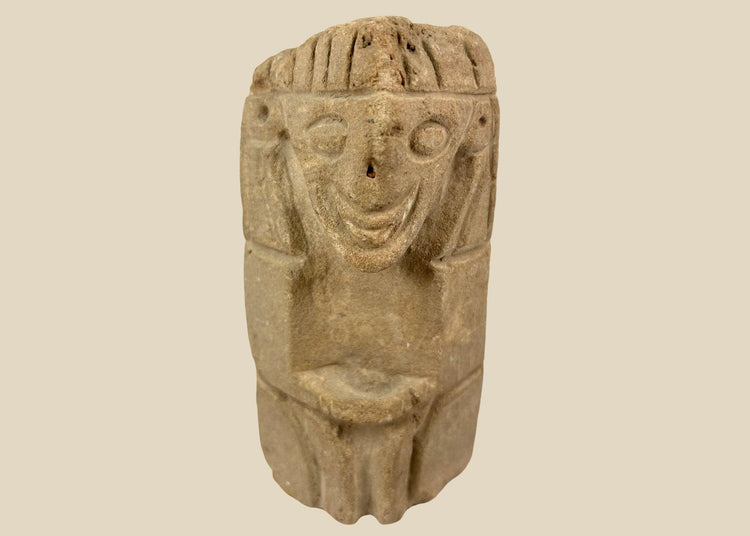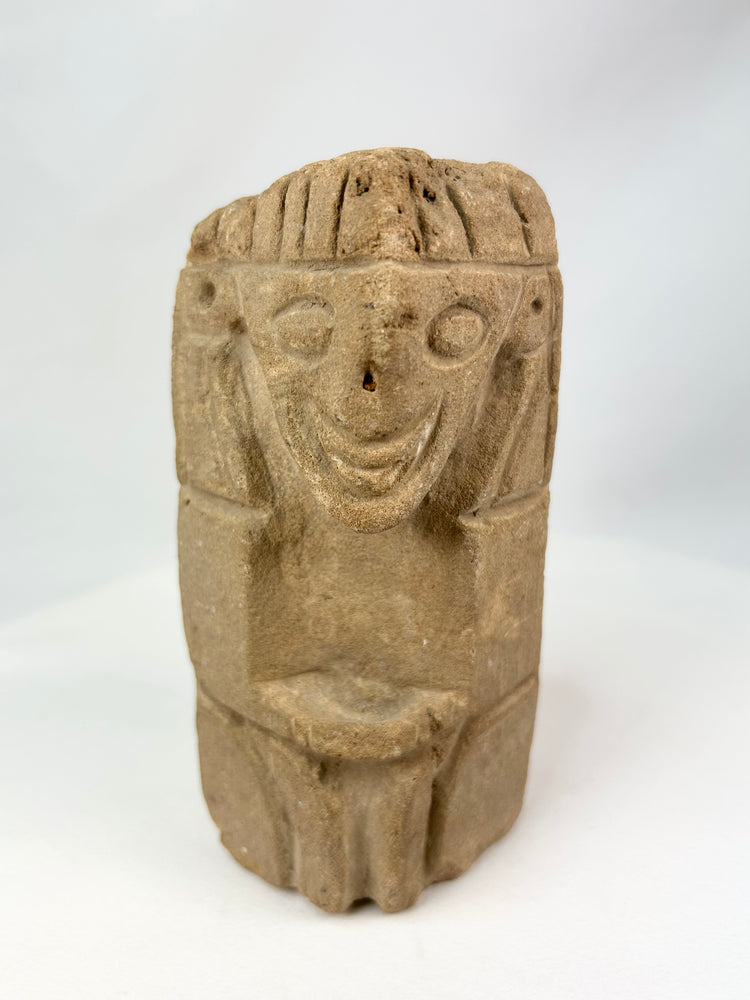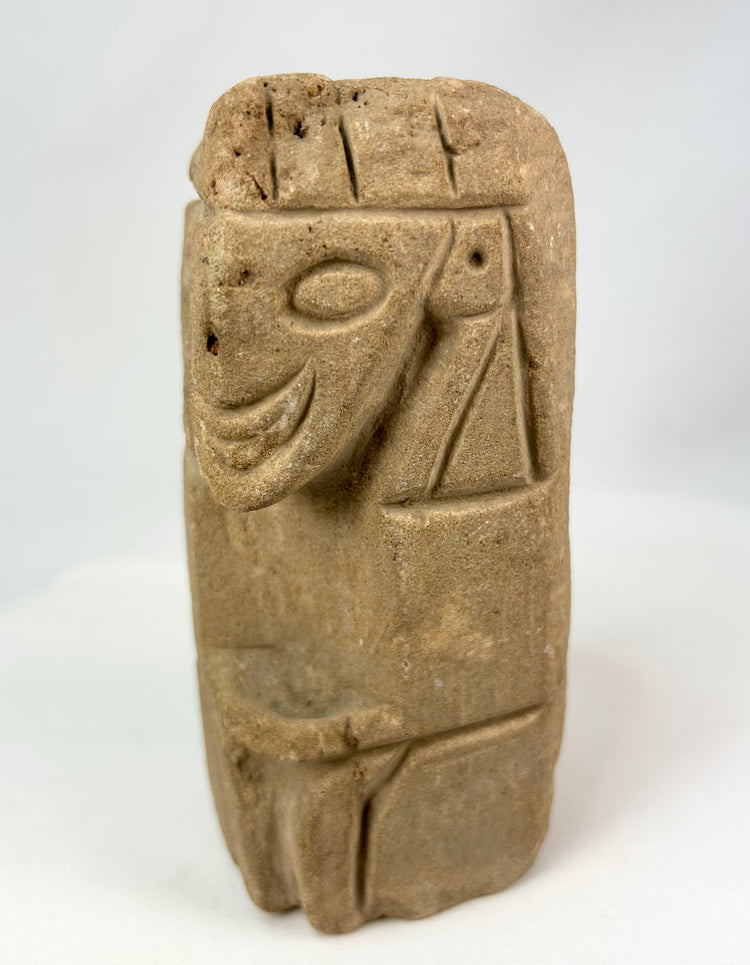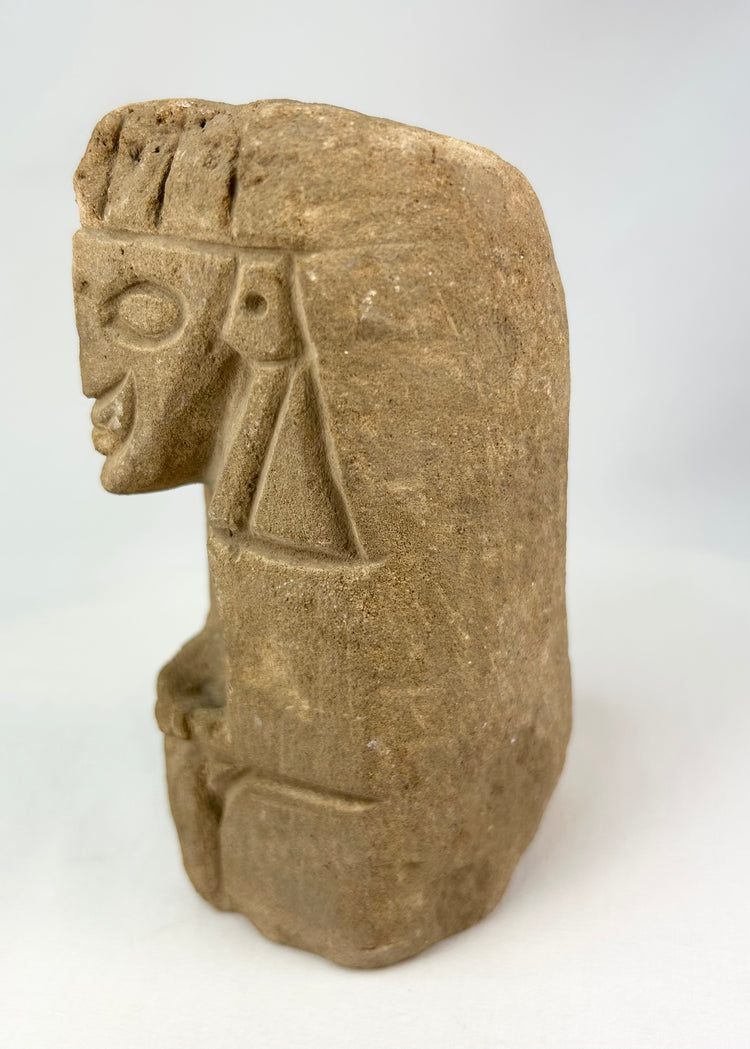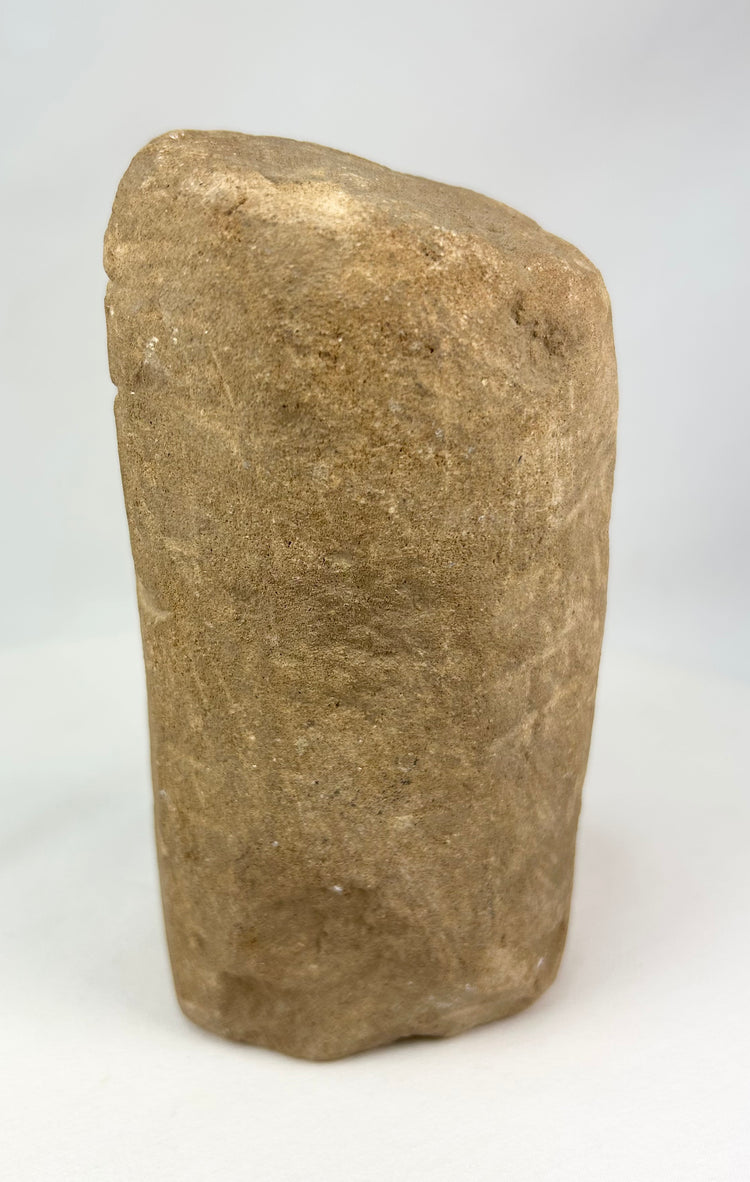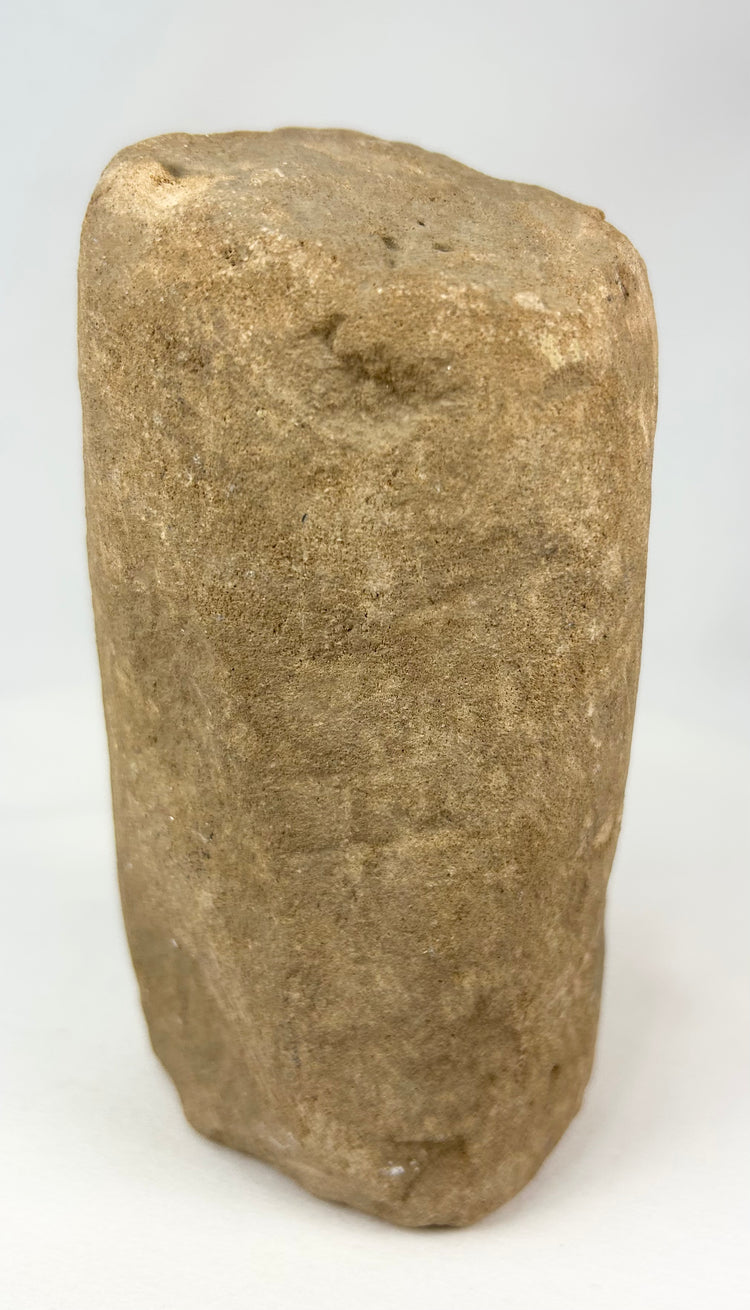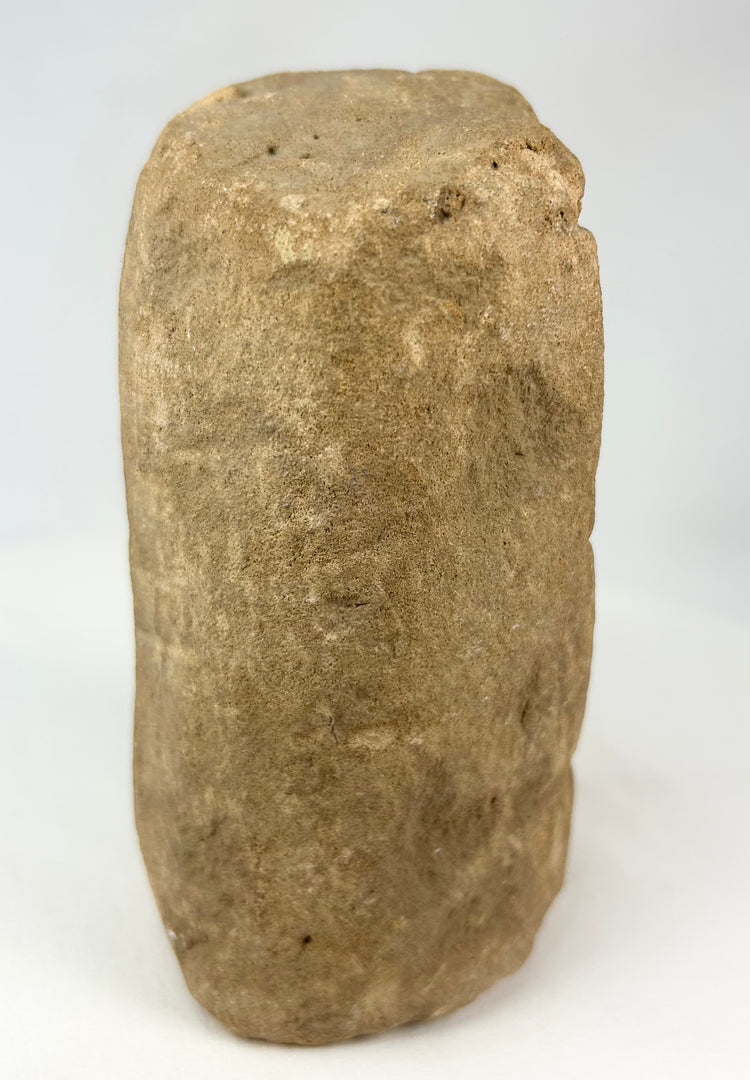Pre-Columbian Carved Stone Idol | Stylized Human Figure | Circa 500–1000 CE
Description
More
Less
Historical Context & Origin
Region: Pre-Columbian Americas (likely West Mexico or Andean Highlands)
Material: Hand-carved volcanic stone or sandstone
Period: Circa 500–1000 CE
Description
This compact and evocative carved stone idol was worked from a single block of volcanic stone, reflecting the spiritual abstraction of Pre-Columbian art. The figure presents a stylized human visage with almond-shaped eyes, prominent brows, and schematic facial features. The torso is simplified, with abstracted arms resting against the body and geometric divisions along the lower section. Strong surface patina and weathering confirm its age, while the compact proportions suggest use in household shrines, funerary contexts, or small ceremonial spaces. Its minimalist form emphasizes symbolic presence over naturalistic detail, making it both a devotional object and an aesthetic artifact of ancient craftsmanship.
Features
- Carved from a single block of volcanic stone or sandstone
- Stylized anthropomorphic form with schematic features
- Simplified arms and geometric divisions on the lower body
- Strong patina and surface weathering consistent with antiquity
- Compact form ideal for shrine, burial, or ceremonial placement
Cultural Significance
Stone idols such as this held a vital place in Pre-Columbian spiritual practice, functioning as embodiments of deities, ancestors, or protective spirits. Their abstracted geometry reflected a worldview in which sacred essence was conveyed through symbolic form rather than naturalistic representation. These figures reinforced spiritual presence in domestic and ritual settings, connecting the living with divine and ancestral realms. Today, they offer a rare and tangible link to the cosmology, devotion, and artistry of early Mesoamerican and Andean societies.
Condition
Very good archaeological condition. Surface weathering, edge chipping, and minor abrasions consistent with great age and burial context. No modern restorations noted. Stable and well-preserved for display.
Dimensions (approximate)
Height: 6 in
Width: 3 in
Depth: 3 in
Age
Circa 500–1000 CE
Description
Historical Context & Origin
Region: Pre-Columbian Americas (likely West Mexico or Andean Highlands)
Material: Hand-carved volcanic stone or sandstone
Period: Circa 500–1000 CE
Description
This compact and evocative carved stone idol was worked from a single block of volcanic stone, reflecting the spiritual abstraction of Pre-Columbian art. The figure presents a stylized human visage with almond-shaped eyes, prominent brows, and schematic facial features. The torso is simplified, with abstracted arms resting against the body and geometric divisions along the lower section. Strong surface patina and weathering confirm its age, while the compact proportions suggest use in household shrines, funerary contexts, or small ceremonial spaces. Its minimalist form emphasizes symbolic presence over naturalistic detail, making it both a devotional object and an aesthetic artifact of ancient craftsmanship.
Features
- Carved from a single block of volcanic stone or sandstone
- Stylized anthropomorphic form with schematic features
- Simplified arms and geometric divisions on the lower body
- Strong patina and surface weathering consistent with antiquity
- Compact form ideal for shrine, burial, or ceremonial placement
Cultural Significance
Stone idols such as this held a vital place in Pre-Columbian spiritual practice, functioning as embodiments of deities, ancestors, or protective spirits. Their abstracted geometry reflected a worldview in which sacred essence was conveyed through symbolic form rather than naturalistic representation. These figures reinforced spiritual presence in domestic and ritual settings, connecting the living with divine and ancestral realms. Today, they offer a rare and tangible link to the cosmology, devotion, and artistry of early Mesoamerican and Andean societies.
Condition
Very good archaeological condition. Surface weathering, edge chipping, and minor abrasions consistent with great age and burial context. No modern restorations noted. Stable and well-preserved for display.
Dimensions (approximate)
Height: 6 in
Width: 3 in
Depth: 3 in
Age
Circa 500–1000 CE
You May Also Like




















